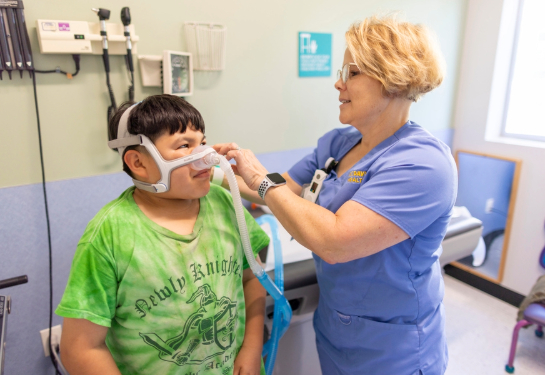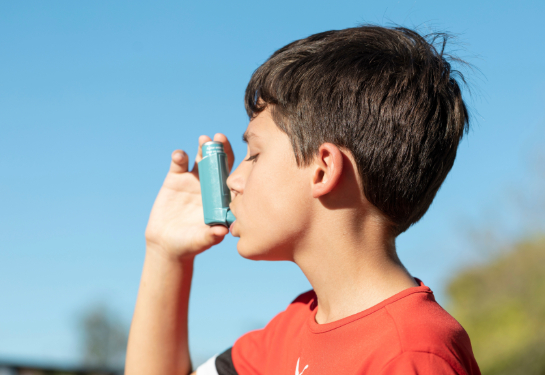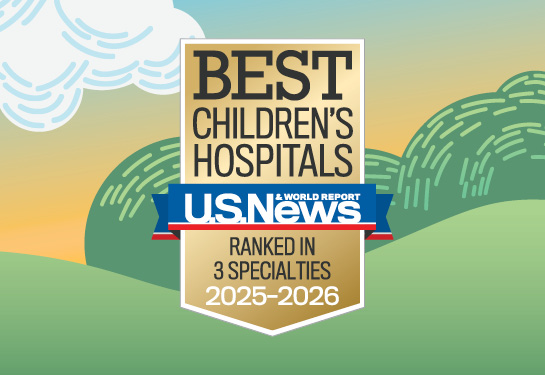Improving outcomes, reducing COPD flare-ups: How respiratory therapists are transforming outpatient care
Award-winning paper highlights benefits of respiratory therapists in COPD clinic
Krystal Craddock has received a prestigious literary award for her research on a groundbreaking care model that relies on using respiratory therapists in the Comprehensive COPD Clinic at UC Davis Health.
Her recognition — the 2025 Mallinckrodt Literary Award — was based on a paper she wrote that evaluated the benefits of embedding respiratory therapists (RTs) into a dedicated COPD clinic — a practice UC Davis Health adopted years before other health systems. The study found that having RTs in the outpatient setting led to significant improvements in patient symptoms and flare-ups and a notable reduction in hospitalizations, highlighting the value of RT-led interventions in chronic disease management.
The Mallinckrodt Literary Award is presented annually for the best paper by a first-time author published in Respiratory Care, the official scientific journal of the American Association for Respiratory Care (AARC).
Craddock, a longtime respiratory therapist, is the University of California Asthma Network (UCAN) and Reversible Obstructive Airways Disease (ROAD) Biologics Clinic Coordinator. We spoke with Craddock recently about the significance of her research, the COPD clinic’s work and the growing importance of respiratory therapists in outpatient care.
What does winning the 2025 Mallinckrodt Literary Award mean to you?
It was incredibly surprising — a literary award is such a tremendous honor. I was honestly in shock when I found out I’d received it. But more than anything, I felt proud of the work we’ve done and the journey it took to get it published. It’s been a long road, and I’m deeply grateful to my mentors, especially the physician mentors who co-authored the paper with me. I’m humbled and appreciative of all the support along the way.
What inspired you to draft the article, “The Effect of Respiratory Therapist Case Managers Integrated into COPD Clinical Care”?
Few health systems have subspecialty pulmonary clinics with RTs working with adults in the outpatient setting — most RTs focus on pediatrics or inpatient settings. Our profession has been advocating to provide more value-based care, and our positive outcomes highlight the value RTs bring in improving quality of life and reducing unnecessary hospital admissions.
Is it unique to UC Davis Health to have RT case managers integrated into COPD clinical care?
UC Davis Health was one of the first to integrate RTs into the inpatient case management of COPD and asthma care. That program helped transition patients from hospital to home, significantly reducing 30-day readmissions for COPD exacerbations. Since then, similar models have spread nationwide.
We’ve since expanded this approach into the outpatient setting with a specialized COPD clinic, aiming to catch patients earlier and prevent hospitalizations. While these clinics are still rare, I hope this model will grow just as the inpatient RT programs did.
What is the role of RTs within the COPD clinic at UC Davis Health?
In our clinic, the RT is the first to see the patient before the pulmonologist. We conduct a comprehensive assessment — reviewing their current medications, past treatments and providing education. We also evaluate diagnostic data like pulmonary function tests, lab values, radiographic testing and symptom scores. After that, we present our findings and recommendations to the physician. After the physician further examines the patient, a comprehensive care plan is made using this team approach.
What do you believe RTs bring to COPD care that other clinicians may not be able to provide in the same way?
RTs are uniquely trained with a focused education on the cardiopulmonary system. While other health care professionals may study the entire body systemically, RTs specialize deeply in respiratory care from the start. That makes us especially well-prepared to manage diseases like COPD and asthma. It’s a natural fit — or as I like to say, a “plug and play” — to have an RT in a pulmonary clinic because we bring that specialized knowledge and skill set.
In your view, what aspect of RT involvement had the greatest impact on reducing CAT (COPD Assessment Test) scores and exacerbations?
The biggest impact came from the education we provided. Many patients don’t fully understand what COPD is or how to manage it. By reviewing their medications, checking adherence, and teaching them how to respond early to symptoms — like when they’re short of breath — we empowered them to act before things escalated. That early intervention helped prevent hospitalizations and improved their symptom scores.
What recommendations do you have for clinics or health systems looking to replicate this model?
I recommend making respiratory therapy a dedicated, full-time role in both inpatient and outpatient settings to specifically provide disease case management. While COVID highlighted the need for RTs in hospitals, their impact in outpatient care is just as critical — especially as health care shifted toward value-based models focused on preventing readmissions. RTs are not only effective in improving outcomes, but they’re also a cost-efficient option compared to other providers. There’s growing evidence and successful programs out there that show this model works, and it’s time more systems embraced it.
“When RTs are involved, we see improvements in symptoms and fewer exacerbations. It highlights just how much potential there is when RTs are fully integrated into chronic disease care.”—Krystal Craddock
What do these findings say about the underutilized potential of RTs in chronic disease management?
These findings show that we can — and should — be doing more. RTs have the training and ability to educate patients, assess their treatment plans and make meaningful recommendations. When RTs are involved, we see improvements in symptoms and fewer exacerbations. It highlights just how much potential there is when RTs are fully integrated into chronic disease care.
What unique value do RTs bring to the care team beyond clinical expertise?
RTs often serve as physician extenders. We have the time to sit with patients, listen closely and build trust — which sometimes allows us to uncover details that might not come up during a physician’s visit. That additional insight can be incredibly helpful in guiding clinical decisions. Our specialized knowledge, combined with that patient connection, makes us a vital part of the care team, especially in chronic disease management.





